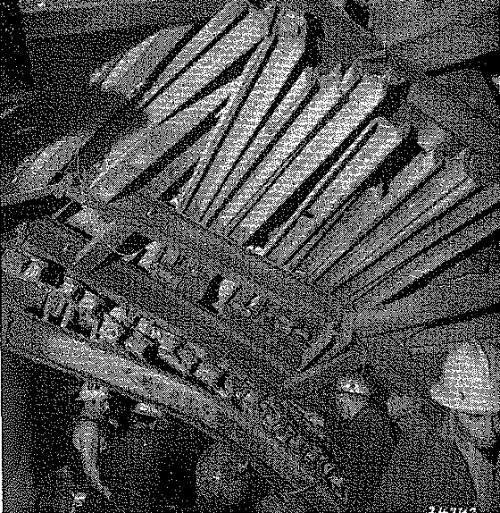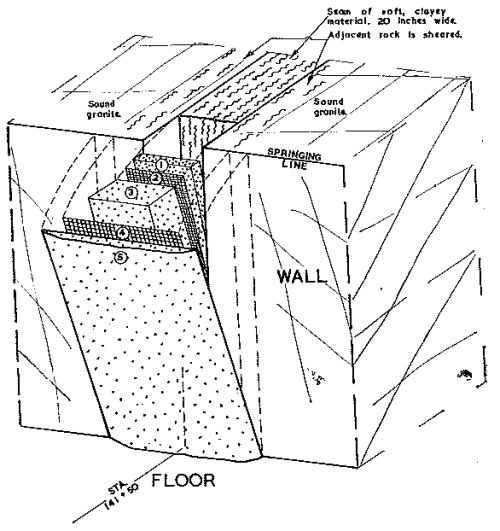UNSTABLE ROCK AND ITS TREATMENT SNOWY MOUNTAINS SCHEME

Fig. 14.—Using steel-rail spiling to provide a protective canopy through a 20ft wide zone of decomposed granite collapsing into the tunnel.
A seam usually varies in width from place to place. Some are lens-shaped and close down in places to mere cracks with areas of rock bearing on rock across the cracks. Removal of the clay filling from seams of this kind is unimportant since rock pressure continues to be transmitted across the seam through rock bearing on rock, without any loosening of the rock mass. Also extension of the fissures back into the rock mass comes to an end in short distances as the seams become very narrow. Isolated seams of this kind varying in maximum thickness up to 1-2 in. are usually left untreated, if the adjacent rock is broadly jointed and sound.
Other seams occur as sheets of clay and crushed rock of fairly uniform thickness extending through the rock mass for long distances. Such seams must be under pressure from the rock on either side. In some seams this is indicated by the slow extrusion of plastic clay from the seams into the tunnel. ln others the clay is rather dry, tough and leathery, probably due to consolidation under pressure with the elimination of water. Removal of clay would be accompanied by inward movement of the adjacent rock and this could lead to progressively loosening of the joint blocks in the surrounding rock mass.

Fig. 15.—Method of final treatment of seam of crushed conpletely decomposed disintegrated and collapsing granite in Eucumbene-Snowy Tunnel. The seam was prepared for treatment by barring down loose rock and cutting back weak seam in a slot.
